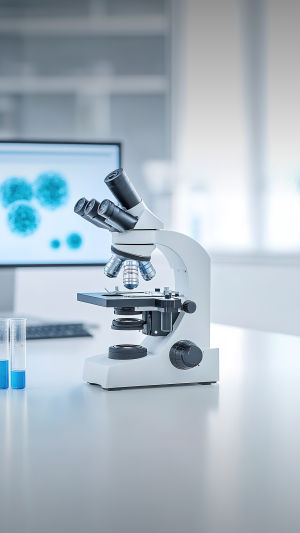You've probably heard the term "superbugs" tossed around—those bacteria that seem to shrug off the effects of the antibiotics we've relied on for decades.
But what if they're not just a buzzword? What if these bacteria could be a real threat to public health, one that's already creeping up on us in hospitals and beyond?
As antibiotics become less effective, we face the very real risk of returning to an era where once-treatable infections could once again be deadly.
<h3>What Are Superbugs?</h3>
Superbugs are bacteria that have developed resistance to the antibiotics that once killed them or inhibited their growth. This resistance happens over time, as bacteria evolve and adapt to the drugs designed to fight them. Unlike a typical bacteria infection, which can be cleared up with a round of antibiotics, superbugs can survive treatments and continue to multiply, making infections harder—and sometimes impossible—to treat.
1. How It Happens: Bacteria can mutate, and these mutations sometimes allow them to survive exposure to antibiotics. Over time, the more exposure to antibiotics, the stronger the bacteria get.
<b>Example:</b> Methicillin-resistant Staphylococcus aureus (MRSA) is a well-known superbug. Initially treatable with methicillin, it has become resistant to a wide range of antibiotics, making it a major hospital-acquired infection.
2. Natural Selection: The process is a form of natural selection. When you use antibiotics, sensitive bacteria die off, but the resistant ones survive and multiply. This leads to stronger, drug-resistant strains.
<b>Example:</b> In the case of tuberculosis, patients who do not complete their full antibiotic course allow the bacteria to develop resistance, leading to drug-resistant TB strains.
<h3>Why Superbugs Are a Growing Threat</h3>
Superbugs are more than just a nuisance; they pose a serious, growing threat to global health. As they become resistant to multiple antibiotics, they make once-simple infections deadly again. This is especially worrying for people with weakened immune systems, the elderly, or those undergoing surgery, where even a small infection can become life-threatening.
1. Healthcare Impact: In hospitals, where antibiotics are often used to treat severe infections, the rise of superbugs can lead to longer hospital stays, more intensive treatments, and higher costs.
<b>Example:</b> According to the Centers for Disease Control and Prevention (CDC), more than 2.8 million antibiotic-resistant infections occur each year in the U.S. alone, leading to more than 35,000 deaths annually.
2. Limitations of Current Medicine: Our reliance on antibiotics is so ingrained in modern medicine that many procedures, like tissue transplants, chemotherapy, or major surgeries, depend on them to prevent infections. Superbugs threaten the very foundation of these procedures.
<b>Example:</b> In the event of an infection from a superbug, doctors may have to resort to last-resort antibiotics, which often come with severe side effects and limited effectiveness.
<h3>How We Got Here</h3>
The rise of superbugs didn't happen overnight. It's the result of several factors, including overuse, misuse, and the natural evolutionary cycle of bacteria.
1. Over prescription of Antibiotics: One of the leading causes of antibiotic resistance is the over prescription of antibiotics for illnesses that don't require them, like colds or viral infections. Taking antibiotics unnecessarily accelerates resistance.
<b>Example:</b> A study from the CDC found that nearly 30% of antibiotics prescribed in outpatient settings are unnecessary. That's millions of prescriptions a year for conditions antibiotics can't even treat.
2. Agricultural Use: Antibiotics are also widely used in farming, not just to treat disease, but to promote growth in healthy animals. This practice exposes bacteria to antibiotics constantly, encouraging resistance to develop.
<b>Example:</b> The use of antibiotics in livestock farming has been linked to the rise of resistant bacteria that can jump from animals to humans, especially in the food supply.
3. Global Travel: As people travel more, they spread resistant bacteria across borders. Superbugs don't respect national boundaries, making it harder to contain them.
<b>Example:</b> A person infected with a resistant strain of Salmonella could travel from one country to another, bringing the bacteria along and potentially starting an outbreak.
<h3>What Can Be Done to Fight Back?</h3>
Despite the severity of the superbug threat, there's a lot we can do to slow down and even reverse antibiotic resistance. It starts with better stewardship of the antibiotics we have and exploring new alternatives.
1. Stewardship of Antibiotics: Ensuring antibiotics are used only when absolutely necessary is crucial. This involves better prescribing practices in healthcare and regulating the use of antibiotics in farming.
<b>Example:</b> Many countries are introducing stricter regulations on antibiotic use in agriculture. In the European Union, the use of antibiotics to promote growth in animals has been banned since 2006, and other countries are following suit.
2. Development of New Antibiotics: The pharmaceutical industry is investing in the development of new antibiotics and alternative treatments. But this process is slow and costly. Encouraging innovation through funding and policy changes is key.
<b>Example:</b> The U.S. government has launched programs like the "Combating Antibiotic-Resistant Bacteria" initiative, which aims to accelerate the development of new antibiotics and alternative therapies.
3. Public Awareness: Educating the public about the dangers of misuse and overuse of antibiotics is critical in the fight against superbugs. People need to understand that antibiotics should not be taken for viral infections or without a doctor's prescription.
<b>Example:</b> Campaigns like the CDC's "Get Smart: Know When Antibiotics Work" have successfully reduced unnecessary antibiotic prescriptions by raising awareness.
<h3>Looking Ahead: The Future of Antibiotic Resistance</h3>
The challenge of superbugs is one that requires global action and individual responsibility. By using antibiotics more wisely, investing in new solutions, and spreading awareness, we can start to turn the tide. The fight against antibiotic resistance is far from over, but with continued vigilance and effort, we can keep these superbugs from taking over.
As we move forward, we must remember that the actions we take today—whether it's taking the full course of antibiotics or supporting the development of new drugs—will shape the world of tomorrow. The choices we make could very well determine whether the era of antibiotic miracles ends or continues.





